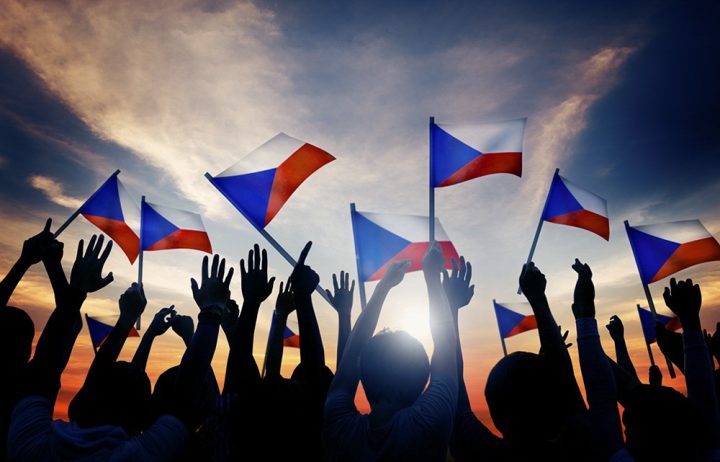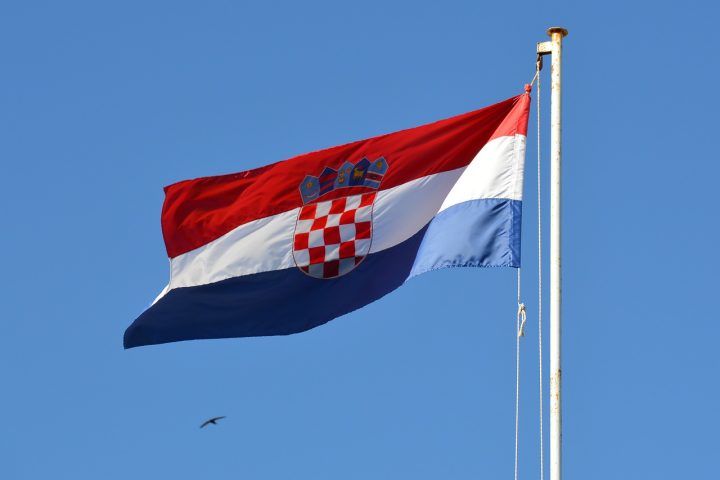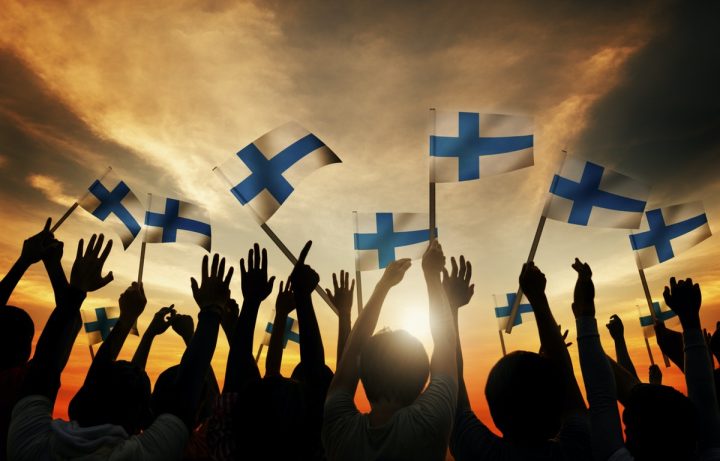European ecommerce overview: Slovakia
Written by
Kinga EdwardsPublished on
Uncover Slovakia’s e-commerce potential! Our overview provides essential knowledge on market, consumers, payments & more.

Slovakia might not be the first country that comes to mind when you think about e-commerce – but it’s definitely one to watch. Tucked in the heart of Europe, this landlocked country has been growing steadily since becoming independent in 1993. It shares borders with five countries (Poland, the Czech Republic, Austria, Ukraine, and Hungary), joined the EU in 2004, and adopted the euro in 2009. No coastline, but plenty of digital potential.
E-commerce in Slovakia has picked up serious momentum over the last few years. More people are shopping online; more businesses are selling online. It’s a small market with big ambition – so whether you’re already in or thinking about expanding, there’s a lot to explore in Slovak e-commerce.
Slovak ecommerce overview
Slovak e-commerce in 2025 is buzzing with activity. The market has seen impressive growth, with total online sales projected to hit $1,916.5 million in revenue this year, positioning Slovakia as the 56th largest e-commerce market globally. This upward trend is expected to continue, with a compound annual growth rate (CAGR) of 6.8% anticipated between 2025 and 2029 and 14.22% between 2025 and 2030.
Diving into the market segments, Hobby & Leisure leads the pack, accounting for 27.7% of the e-commerce revenue. It’s followed by:
- Electronics at 20.2%,
- Fashion at 16.3%,
- and Furniture & Homeware at 11.8%.
In terms of online penetration, e-commerce constitutes about 10.2% of the total retail market in Slovakia. The figure is projected to rise to 12.2% by 2029, reflecting a growing shift towards online shopping among Slovak consumers.
Leading the charge in the Slovak e-commerce space is alza.sk, which reported revenues of $412.6 million in 2024. Other significant players include mall.sk and itesco.sk, each contributing substantially to the market’s dynamism.
But there are more competitors, like Nextdirect Germany GmbH and Sportisiomo Sk. And check out how big a part of e-commerce leaders belong to other companies.
The Slovak e-commerce industry is characterized by a focus on innovation, with companies investing in research and development to enhance customer experience and optimize supply chains. Additionally, regulatory factors such as tax regulations, consumer protection laws, and data privacy regulations play a significant role in shaping market dynamics.
Generally speaking: Slovak e-commerce in 2025 is marked by robust growth, evolving consumer preferences, and a competitive landscape that continues to drive innovation and expansion.
Consumer behavior in Slovakia
Slovak consumers are embracing online shopping like never before. With internet penetration at 91.8% – that’s about 5.05 million people connected. Thus, it’s no surprise that e-commerce is booming.
Mobile devices are playing a huge role in this shift. With 6.20 million active cellular connections, many Slovaks are using their smartphones to browse and buy, making mobile optimization a must for online retailers.
When it comes to what they’re buying, categories like electronics, fashion, and home goods are topping the charts, as we have said before. You can tell people here are feeling pretty confident with online shopping. They’re picking up everything from sneakers to sofas without blinking.
Cross-border shopping is also on the rise. Many Slovak consumers are looking beyond local retailers to find better deals and a wider selection, especially from neighboring EU countries.
Yet, despite the digital surge, traditional retail habits persist. Some shoppers still prefer in-store experiences for certain purchases, indicating that a blend of online and offline strategies – like click-and-collect – can be effective. So, at the end of the day, some folks still like to see it, touch it, and take it home the old-fashioned way.
Looking ahead, things are only going to grow. As tech gets better and people get even more used to shopping online, Slovak e-commerce will keep picking up speed. The shops that pay attention and roll with those changes? They’ll do just fine.
Payments methods in Slovakia
Alright, let’s talk about how people in Slovakia are paying for their online shopping sprees in 2025. It’s a mix of the old-school and the new, blending tradition with tech.
Cash is still king… for some
Believe it or not, cash hasn’t left the building. A good chunk of people still opt for cash, especially those who like the tangible feel of money changing hands. It’s familiar, it’s trusted, and for many, it just feels right.
Cards are everywhere
Credit and debit cards? Oh, they’re everywhere. In 2023, people in Slovakia spent around $27.6 billion using cards – and that number’s only going up. From 2024 to 2028, it’s expected to grow by over 7% each year, thanks to more folks tapping their way through checkouts with contactless cards. Whether it’s a quick tap at a café or entering card details online, this method remains a top choice for many Slovaks.
Digital wallets are gaining ground
Now, for the tech-savvy crowd, digital wallets like PayPal, Google Pay, and Apple Pay are the go-to. They’re all about speed and convenience – just a few taps on your phone, and you’re done. No need to carry physical cards or cash. Generally speaking, digital payments in Slovakia are on a serious rise. In 2025, the total value of transactions is expected to hit about $13.4 billion. And it won’t stop there – if things keep growing at around 22.6% a year, that number could more than double to $30.3 billion by 2029.
BLIK makes an entrance
Speaking of convenience in Slovak e-commerce, there’s a new player in town: BLIK. Originally from Poland, it’s now making waves in Slovakia. Tatra banka customers, for instance, can generate a six-digit code on their phones to complete online purchases. It’s quick, it’s easy, and it’s catching on fast.
Bank transfers are still in the game
And let’s not forget about direct bank transfers. Especially with the Single Euro Payments Area (SEPA) making cross-border transactions smoother, many still prefer this method for moving money around.
Slovak social media
Slovakia’s social media scene is vibrant and quite deeply integrated into daily life. With a population of approximately 5.49 million, a significant majority are active on various platforms. As of early 2025, there are about 3.98 million social media user identities in Slovakia, representing 72.4% of the total population. Such widespread adoption highlights the central role social media plays in connecting individuals and communities across the nation.
What about platform preferences?
Facebook continues to dominate the social media landscape. It had 3,468,100 users in February 2025. Its enduring popularity underscores the role as a primary platform for communication and content sharing among Slovaks.
Messenger holds the second position with 2,734,400 users, indicating a niche but dedicated user base interested in creative and lifestyle topics. Instagram follows closely with 1,749,600 users, appealing particularly to younger demographics who favor visual content.
YouTube, Twitter, and Reddit have smaller footprints, with market shares of 2.33%, 1.8%, and 0.84%, respectively. These platforms cater to specific interests, offering diverse content ranging from videos to news and discussions.
Here is a chart with social media stats for Slovakia from Statcounter:
Demographic insights
Examining Facebook’s user demographics provides a glimpse into the broader social media landscape:
- Gender distribution: Women constitute 53.1% of Facebook users, while men make up 46.9%.
- Age groups: The largest segment is individuals aged 25 to 34, totaling 867,100 users. This trend suggests that young adults are the most active cohort on social media platforms. NapoleonCat
Moreover, the number of social media users in Slovakia is projected to grow steadily. Between 2024 and 2029, an increase of approximately 600,000 users is anticipated, marking a 14.89% rise. In addition, reflecting the robust engagement, social media advertising expenditure in Slovakia is projected to reach $196.51 million in 2025. This investment underscores the platforms’ significance as channels for marketing and brand communication.
Logistics in Slovakia
In 2024, Slovakia’s logistics sector was valued at approximately $3.02 billion, with projections indicating growth to USD 4.18 billion by 2029. The compound annual growth rate (CAGR) is over 6.74%.
The truth is the country boasts an extensive transportation network, including over 3,662 km of railways and 43,761 km of roads, as of 2024. Key motorways such as the D1 and D2 connect major cities and facilitate cross-border trade with neighboring countries. Additionally, Slovakia’s strategic location in Central Europe enhances its role as a transit hub.
Of course, the rise of e-commerce has spurred demand for efficient parcel delivery methods. Companies like Alza.sk have expanded their logistics capabilities, operating numerous AlzaBoxes across the country to streamline order fulfillment. In 2021, Alza.cz reported operating 1,800 AlzaBoxes throughout the Czech Republic, Slovakia, and other countries, highlighting the growing importance of automated parcel lockers in the region.
Moreover, several international logistics companies operate in Slovakia, offering a range of services. Raben Group, for instance, provides road forwarding, warehousing, and intermodal transport, leveraging a network of over 160 depots in 15 countries across Europe.
The thing is, Slovakia’s got solid logistics going for it – quite good roads, decent rail, and a bunch of delivery players, both local and global. Add in the boom in online shopping, and it’s clear the country’s becoming a strong link in the regional supply chain.
Slovak e-commerce has a lot to offer
Slovakia might be a small country, but its e-commerce game is growing fast. More people are shopping online, payments are getting easier, logistics are keeping up, and social media? Totally part of the buying journey.
There’s still a mix of old habits and new tech, but that’s what makes the market interesting. If you’re thinking about tapping into it, now’s a pretty good time to jump in. Things are moving – and they’re moving in the right direction.
If you are interested in other countries, feel free to dive in. There are, for example, articles about Lithuania or Croatia.
***


